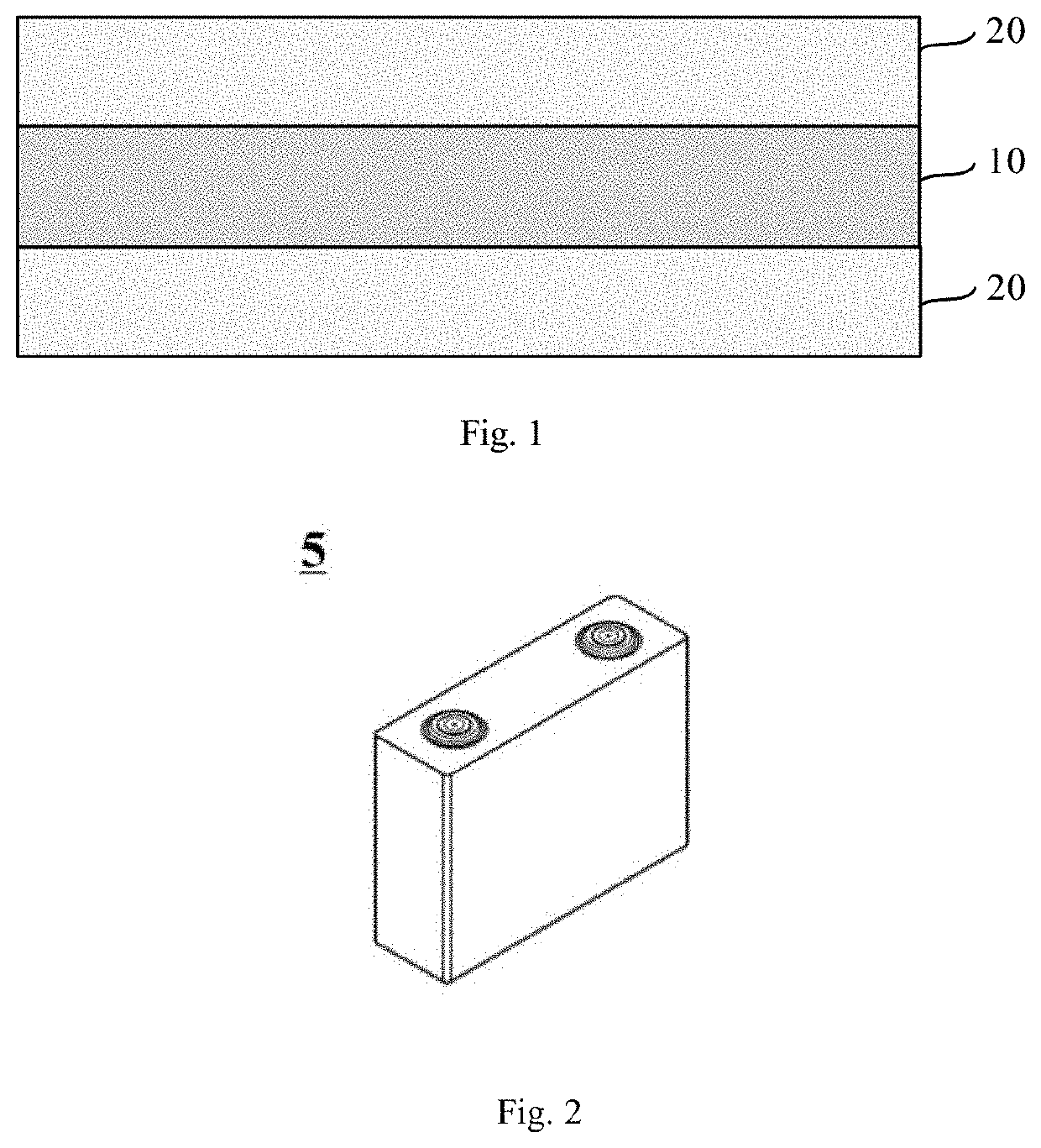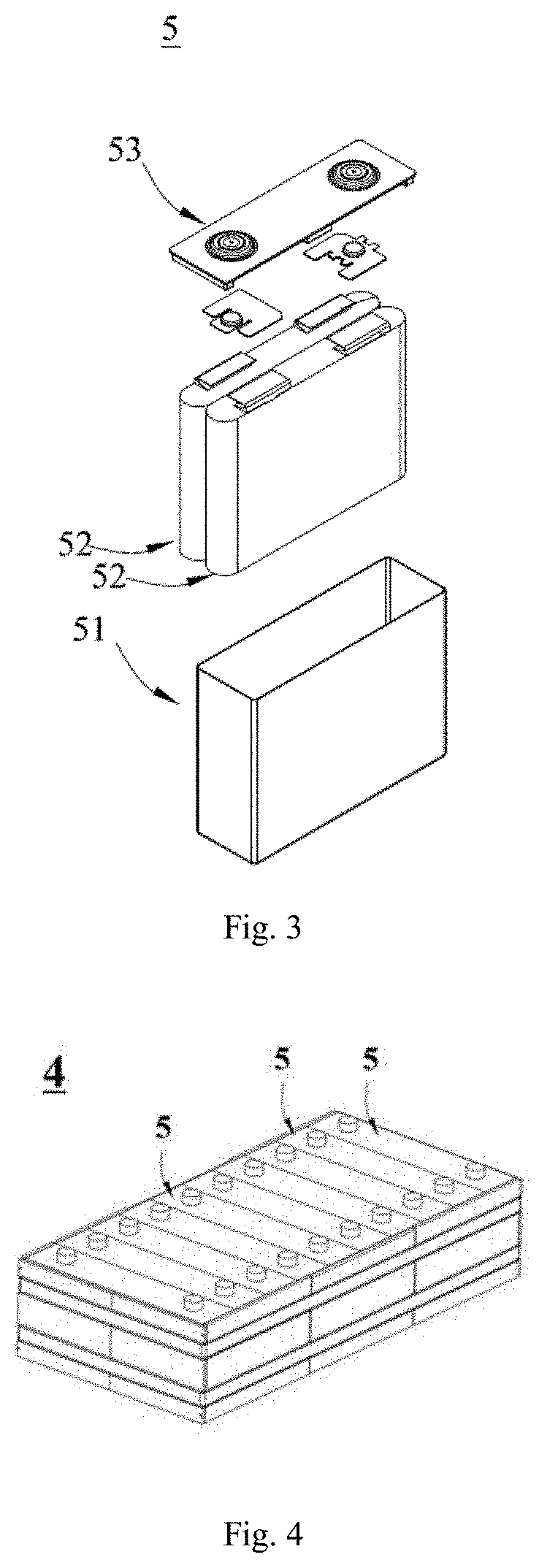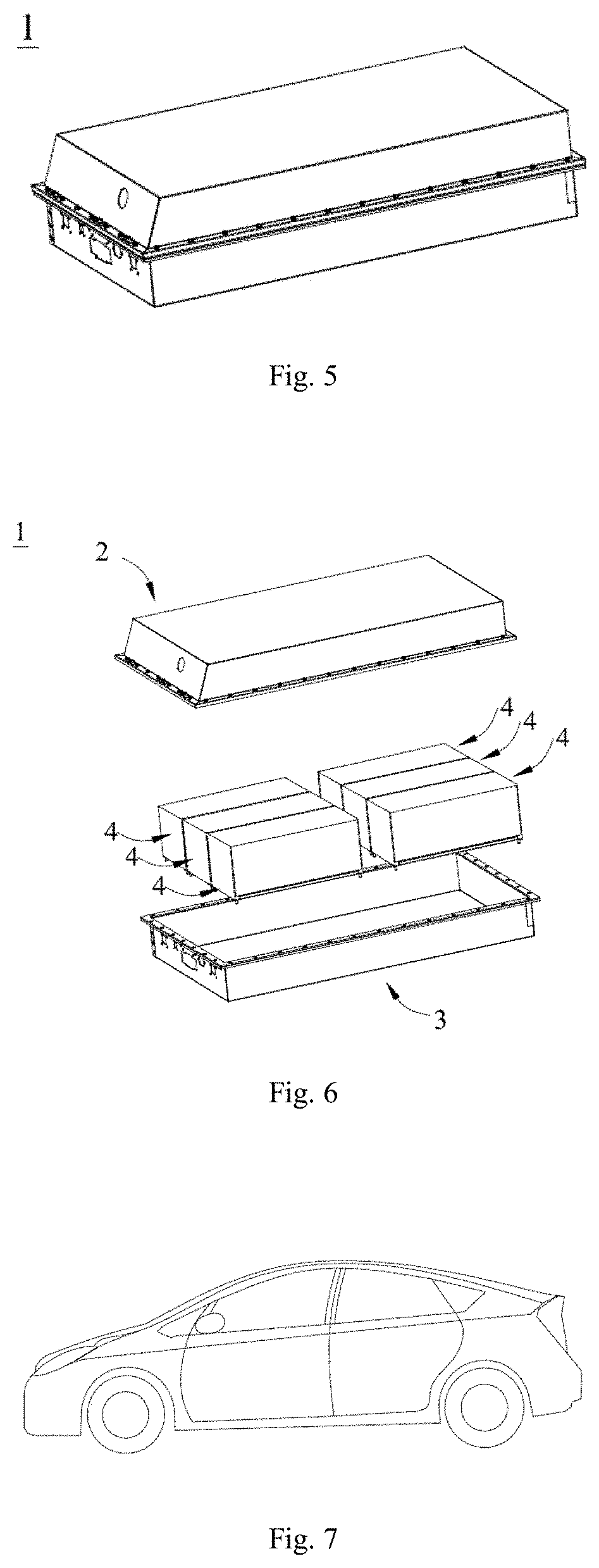Lithium metal battery, process for preparing the same, apparatus containing the lithium metal battery and negative electrode plate
a technology of lithium metal batteries and negative electrode plates, which is applied in the field of secondary batteries, can solve the problems of internal short circuits in batteries, uncontrollable growth of lithium dendrites, and safety risks, and achieve good support and protection effects, reduce the weight of negative electrode plates, and reduce the risk of internal short circuits
- Summary
- Abstract
- Description
- Claims
- Application Information
AI Technical Summary
Benefits of technology
Problems solved by technology
Method used
Image
Examples
example 1
Preparation of Negative Electrode Plate
[0104]The negative electrode plate was prepared by calendering. In a dry room with a humidity of ≤0.2% and a temperature of 18±3° C., a lithium belt with a thickness of 50 μm was attached to one side of polypropylene (PP) with a thickness of 10 m. The gap width of rolling machine was adjusted to 28 μm and the temperature of the pressing roll was 25° C. The preparation of a single-sided negative electrode plate was finished by continuous rolling. After winding, the temperature of coil was dropped to 20° C., and the preparation of a double-sided negative electrode plate was finished with the same method. The thickness of the lithium layer on both sides was 20 μm each, and the thickness of the PP base layer was 10 μm.
Preparation of Positive Electrode Plate
[0105]A positive electrode active material LiFePO4, a conductive agent Super P, a conductive agent VGCF (vapor-grown carbon fiber), an ionic conductor polymer polyethylene oxide PEO, a lithium sa...
PUM
| Property | Measurement | Unit |
|---|---|---|
| thickness | aaaaa | aaaaa |
| thickness | aaaaa | aaaaa |
| thickness | aaaaa | aaaaa |
Abstract
Description
Claims
Application Information
 Login to View More
Login to View More - R&D
- Intellectual Property
- Life Sciences
- Materials
- Tech Scout
- Unparalleled Data Quality
- Higher Quality Content
- 60% Fewer Hallucinations
Browse by: Latest US Patents, China's latest patents, Technical Efficacy Thesaurus, Application Domain, Technology Topic, Popular Technical Reports.
© 2025 PatSnap. All rights reserved.Legal|Privacy policy|Modern Slavery Act Transparency Statement|Sitemap|About US| Contact US: help@patsnap.com



